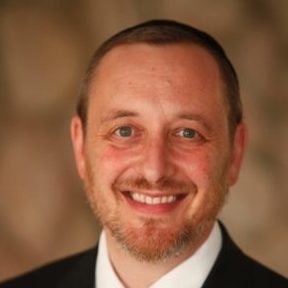Inner Worlds

Rochel Imeinu’s silent core of modesty was the source of her greatness

We first met Rochel Imeinu in our first grade Chumash glass. Her story was exciting, enchanting, exalted.
As the years rolled by, our connection with Rochel Imeinu deepened; perhaps embellished through the impassioned strains of Yaakov Shwekey’s poignant notes, she emerged as someone personal in our lives. We draw comfort from the description of Rochel Imeinu crying for her children, and we try to wrap our minds around the incredible sacrifice she made for her sister.
But when Chazal talk about the defining attributes of Rochel Imeinu, the focus isn’t on her tefillah or her mesirus nefesh. What Chazal identify as Rochel’s primary middah, so dominant that it was passed on to her progeny, is tzniyus.
As a reward for the tzniyus that was exhibited by Rochel, she merited that [the tzanu’a] Shaul descended from her. And as a reward for the tzniyus that was exhibited by Shaul, he merited that [the tzanu’ah] Esther descended from him. (Megillah 13b)
Rochel Imeinu passed on her middah of tzniyus to Shaul Hamelech, who in turn passed it on to Esther Hamalkah. It was a journey of sechar that traveled one and a half thousand years.
Tzniyus? Really?
Prayer and Sacrifice
Through the heartwarming stories of parshas Vayeitzei, with its hazy imagery of wells and sheep and treachery, filtered through the visions of the Prophets that take Rochel all the way to the End of Days, two special qualities shine through.
The first is connected to tefillah. Rochel is our devoted and loving matriarch, standing by the roadside, crying on our behalf:
“Koh amar Hashem, kol b'ramah nishma, nehi bechi samrurim, Rochel mevakah al baneha… So says Hashem, a voice is heard in [the] Higher [Worlds], lamentation, bitter weeping, Rochel is crying for her children [as they go out into Exile]…” (Yirmiyahu 31:14).
The Vilna Gaon teaches us that the ultimate place for Jews to pour out their anguished hearts to their Creator is not at the Kosel, but at Kever Rochel (Tikkunei Zohar; see also Iggros Umichtavim of Rav Yisrael Salanter, Letter 20). It’s where our tefillos soaked in tears combine with the tears of our mother Rochel to pierce the Gates of Heaven. Rochel Imeinu is the eternal Yiddishe mamme praying for her kinderlach.
Secondly, she embodies self-sacrifice and loyalty. Rochel knew through ruach hakodesh that her zivug was Yaakov Avinu, the bechir sheb’avos, the choicest of our forefathers. Together they’d build Klal Yisrael, who in turn would bring the world to its intended perfection. Every moment of her life had been an intense preparation for this lofty role.
But she had to make a choice. Would she choose her destiny at the cost of her sister’s shame? She knew the Torah forbids two sisters to marry one man, and she knew she only had one zivug (the chiddush that Yaakov could marry two sisters in chutz l’Aretz wasn’t revealed to her). Rochel knew with absolute clarity the consequence of Yaakov marrying Leah: She would remain a lonely spinster for the rest of her days, living in the house of her wretched deceitful father, watching from afar as Yaakov and Leah built the Jewish Nation.
Her decision was an unparalleled act of self-sacrifice.
It came with a huge price. She would have to betray her bashert, Yaakov Avinu, the man whose essence was truth. Yaakov had arranged with Rochel “simanim — signs,” a secret code between them that would allow Yaakov to know with certainty that Lavan had not tricked him by switching sisters. Rochel had to share a secret that was intended to be the private domain between husband and wife. The price Rochel paid for her self-sacrifice would seem to be a breach in her tzniyus.
Our holy seforim share more details about the simanim. To transmit the simanim to Leah, Rochel would have to act in a way that is the antithesis of tzniyus.
On a simple level, we grasp that Rochel Imeinu is legendary for her tefillos and she’s outstanding in her mesirus nefesh for her sister. But it would seem to us that on her lofty level, she had to compromise her tzniyus.
Of course, that cannot be. We saw that the Gemara identifies tzniyus as her outstanding quality. To confuse us further, when the Gemara relates the defining moment that demonstrates her tzniyus, it’s specifically in her revealing the simanim to her sister.
That was tzniyus? What are we missing here?
“You Saw Yourself”
Many people hear the word tzniyus and think “clothing.” Although this is understandable, especially when learning halachah, it can be misleading. Tzniyus only appears twice in Tanach, neither time pertaining to women or clothing.
Shlomo Hamelech, the wisest of all men, writes, “V’es tznu’im chochmah — wisdom is the domain of the tzanu’a” (Mishlei 11:2). What does tzniyus have to do with wisdom?
The prophet Michah writes, “V’hatznei’a leches — walk with tzniyus” (Michah 6:8). The Gemara (Makkos 24a) gives two examples of mitzvos that define hatznei’a leches. One is hachnassas kallah, celebrating a wedding.
Hmm. Remember Jewish weddings before coronavirus? Even if they were simple affairs and the guests were all dressed appropriately, our weddings tend to be boisterous, noisy, and filled with simchah. I’d never have thought that they define tzniyus.
Rav Wolbe writes (Alei Shur 2:594):
There is an entrenched superficiality in the way our society understands tzniyus. True tzniyus is the journey through which man builds his olam penimi, his inner world.
What exactly is an inner world?
Think of the person who knows you best. Now think of how well you know yourself. Even a spouse of decades knows only a fraction of what we know of ourselves. We have myriad secrets we like to keep hidden.
How well do we even know ourselves? Unfortunately, in a lifetime, we barely scratch the surface of knowing ourselves. All day long we interact with an outside world. We see shapes and colors, which we identify as people, objects, or whatever our cognitive instincts tell us. This becomes our reality.
This reality is a shell, hiding layers and layers of wellsprings that reveal a much deeper and truthful reality. This is our olam penimi, our inner world. But the real me is hidden under the endless distractions of the outside world. We are chronically social, obsessed with our image, always rushing somewhere. When we finally have time for ourselves, we check our phone, listen to music, or read a magazine.
I had the zechus to spend many years listening to the vaadim of Rav Wolbe ztz”l. A recurrent theme was the centrality of cheshbon hanefesh and hisbonenus (introspective thought). He expected us to devote hours a week on self-reflection so that we could be in touch with the olam hapenimi within. He would describe hisbodedus, being alone in thought, as a chavayah, a treat we should treasure.
In Be’er Yaakov, Rav Wolbe used to ask his talmidim to go for walks, alone, deep in meditation. One talmid never took a walk, claiming it was bittul Torah. When Rav Wolbe found out, he insisted, claiming that this was a rule in the yeshivah. Rav Wolbe walked him out, to make sure he was on his way.
Minutes later the talmid was back.
“What happened? Why are you back?” Rav Wolbe asked.
“Stam,” was the response.
“Not stam. Did you see a kelev zar (strange dog) that scared you?”
“No.”
“Did you see an adam zar (strange person) who scared you?”
The talmid was confused and firmly reiterated, “No!”
Rav Wolbe smiled at his talmid and said, “Yes, you saw an adam zar and he scared you. You saw yourself.”
That inner world, the world where we live with our true selves, is the world where our extraordinary matriarch lived, to the total exclusion of the outside word.
It’s the world of ultimate tzniyus. The world of Rochel Imeinu.
Parallel Universes
A school principal may project one personality at work, and her true self comes out at home. Sometimes we create a parallel universe, which we step into when necessary, and then we return to our true universe at the first opportunity.
The tzanu’ah lives in a similar parallel universe. Her comfort zone is in her olam penimi, where, as Rav Wolbe would say, she enjoys the chavayah of living in absolute reality.
An objective observer doesn’t see her as strange. On the contrary, her refinement shines through. This woman is truly mechubedes, a woman who deserves honor. “Kol kevudah bas melech penimah — the princess’s honor is that she is found penimah, indoors” (Tehillim 45:14). On a deeper level, penimah is the inner world where the bas melech resides.
There she finds extreme closeness to Hashem, expressed in two directions. She’s not distracted with the world of sheker, so Hashem can expose her to true wisdom. Hence Shlomo Hamelech directs us to the true fountain of wisdom. “V’es tznu’im chochmah — wisdom is the domain of the tzanu’a” (Mishlei 11:2, see Rabbeinu Yonah ibid).
In the other direction, stemming outward from the tzanu’ah, this world is expressed through constant tefillah.
Esther Hamalkah inherited her foremother’s tzniyus. Her very name, Esther, comes from the word l’hastir, to be hidden. At arguably the most crucial moment in her life, with the future of the Jewish People in her hands, King Achashveirosh furiously demands to know who has threatened to destroy her nation. Her whole life had been leading up to this moment. All she had to do is point at Haman. Instead, she pointed at Achashveirosh, putting her life and everything she had been trying to achieve in jeopardy. An angel descends and forcibly moves her hand so she is pointing at Haman. Phew! Saved by an angel. The Jewish People have been redeemed (Megillah 16a).
What was Esther thinking? It’s true that Achashveirosh was the true villain (see Megillah 11a), but how could she endanger everything she had carefully orchestrated and incur the king’s wrath?
The Vilna Gaon explains (see Sifsei Chaim, Moadim 3:182) that Esther lived in her inner world. Her whole life was one constant dialogue with Hashem. At the crucial moment when she heard the king ask a question, she was deep in her inner world of dveikus, and all she heard was the King of Kings asking the question. So she answered Hashem with the truth by pointing at Achashveirosh.
We can now also understand why when Michah says, “V’hatznei’a leches,” Chazal direct us to our wedding halls. A Jewish wedding is the ultimate parallel universe. As the kol sasson v’kol simchah reverberate at the highest decibels, a quiet secret is being concealed. It isn’t to be spoken of and not even allowed in the realm of thought.
Chassan and kallah, like Yaakov and Rochel thousands of years ago, are creating something new, holy, and extremely private. A Jewish home.
Natural Choice
We can now understand Rochel’s betrayal of her beloved bashert Yaakov with the transmission of the simanim to Leah. Rochel was the quintessential tzanu’ah, living in her inner world. Tefillah and the olam penimi go hand in hand, and Rochel Imeinu cries for her children.
Someone who lives in an olam penimi understands that it’s a perpetually fragile world that’s earned through spiritual toil and must be zealously guarded. The olam hasheker, the fake outside world, beckons with its whistles and bells. The interface between the two worlds must be unyielding like a fortress wall.
If something that belongs to our inner world has been dragged into our outer world, that discomfort manifests itself with the middah of bushah.
Try and relive the last time you were embarrassed. Ask yourself, what made that moment so embarrassing? You’re probably thinking of an incident where something very personal and private became publicly exposed.
In Hashem’s wisdom, He accompanied embarrassment with blushing. Physiologically, the emotional trigger of bushah causes our glands to release adrenaline, which in turn causes capillaries on the surface of our skin to widen. Red blood rushes through, visible on the skin surface. Our blood becomes a powerful physical metaphor of something that should remain internal being exposed to the external world.
While fully understanding the eternal repercussions of her marriage to Yaakov, Rochel’s middah of tzniyus could not allow Leah’s shame. It was antithetical to her very essence. The consequences in her outside world were irrelevant to her, something that’s impossible for us to understand. The greatness of Rochel Imeinu is that her core middah of tzniyus meant that mesirus nefesh for her sister was a natural reflex.
The World of Silence
Leah chose the approach of hodayah, thanksgiving [as central to the way she served Hashem]. All her progeny had the attribute of hodayah; for example, Yehudah, Dovid, Daniel.
Rochel chose the approach of shtikah, silence. All her progeny had the attribute of shtikah; for example, Binyamin [who did not reveal the sale of Yosef], Shaul, Esther. (Bereishis Rabbah 71)
The Midrash identifies Rochel’s defining approach to serving Hashem as silence. This complements the Gemara that informs us that her middah was tzniyus. How?
For most of us, silence makes us feel uncomfortable, certainly when we’re with people that we know. Yet gedolim are quite comfortable with each other without saying a word. They communicate through silence. They teach through silence. Sometimes, like after the Holocaust, they roar through silence.
The avodah of shtikah created by Rochel Imeinu is complex and esoteric. From what we’ve learned, we’ve beamed a ray of light in understanding how it works.
The Gemara cryptically reveals that a child in utero is taught all of Torah and a candle burns over his head enabling him to see from one end of the world to the other. Before he enters the outer world, an angel hits him on his mouth and the Torah he has learned is forgotten. (Niddah 30b)
Maharal (Gevuros 28) explains that the blow to his mouth unleashes his power of dibbur, speech. He is entering a world where society builds and destroys through speech. Simultaneously, he’s leaving behind a world of silence. In that world, there was clarity, vision, and intense closeness to Hashem. Maharal concludes that the avodah of shtikah allows us access to that inner world.
Rochel Imeinu taught us that the power of that world is in its being hidden. And the key to unlock it is tzniyus.
Rabbi Menachem Nissel is a mechanech in Jerusalem, the senior educator of NCSY, and the author of Rigshei Lev: Women and Tefillah. He is a talmid of Rav Shlomo Wolbe ztz”l.
Solitude and Joy
As I write this article, I find myself, together with thousands of other Israelis, in bidud, coronavirus isolation. It pains me to think that this year on the yahrtzeit of Rochel Imeinu, her kever will probably not echo with the fervent tefillos and tears of previous years.
Nevertheless, perhaps with our deeper understanding of the legacy of Rochel Imeinu, her message is more poignant and relevant than ever.
Sometimes, a student will ask me a simple question. Rochel Imeinu had such a difficult life. Esther was raised an orphan and spent the rest of her days in the loathsome palace of Achashveirosh. Were they happy?
Chovos Halevavos (Shaar Habitachon 1) teaches us that they were the happiest people on earth. In the inner silent world they had built, they tasted the sublime joy of closeness to Hashem. Hashem was their true reality, and in that world, they knew the pleasure of the womb and the ta’anugim of the World to Come.
Our new socially distanced, home-focused, slower-paced world of coronavirus is inviting us to discover that world.
And there, on the roadside, we will find Rochel Imeinu, still crying for her children, patiently waiting for that moment when Hashem wipes away tears forever.
Rabbi Menachem Nissel is a mechanech inJerusalem, the senior educator of NCSY, andthe author of Rigshei Lev: Women and Tefillah.He is a talmid of Rav Shlomo Wolbe ztz”l.
(Originally featured in Family First, Issue 714)
Oops! We could not locate your form.





